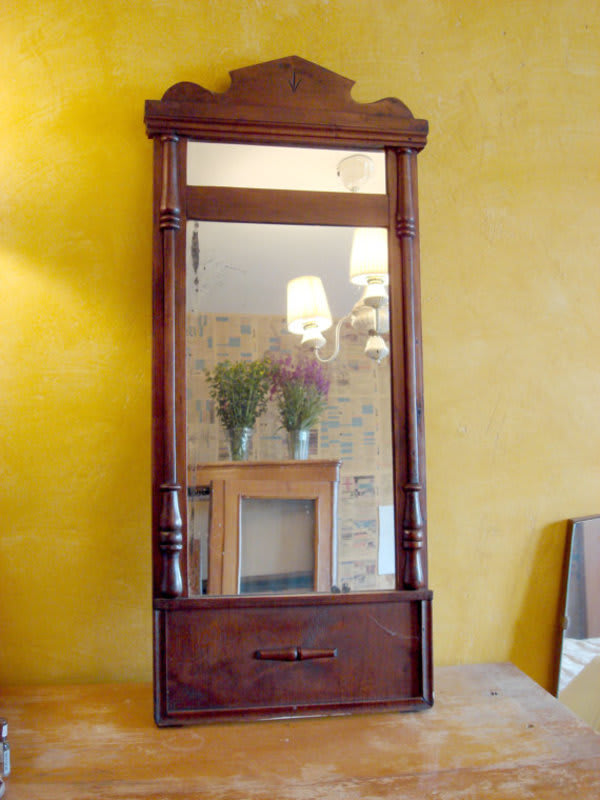Reflecting on that favorite mirror, or wondering if you’ve found an authentic antique? There are some beautiful, timeless mirrors out there, and we’ve got all the info you need to know about them!

Photo credit: eBay
How old are they? Mirrors as a whole date back to ancient times, when people would use volcanic glass to see their reflection, and have evolved ever since then. Modern mirrors as we know them today really gained popularity in the 17th century, according to CILSS. The method ñ coating glass with a reflective tin amalgam ñ actually was discovered in the 16th century, but mirrors became more popular later.
Why did they become popular? As with many antiques we see, royalty’s interest in mirrors boosted their popularity among the masses. Inviting Home claims that, because mirrors tended to be so expensive, they were seen as a symbol of prestige and wealth that many people wanted to show off. Eventually cheaper manufacturing methods were developed in the 19th century, making them much more affordable to the general public.

Photo credit: English Antique Imports
Are they tough to find? Like so many antiques, it’s not that antique mirrors are tough to find ñ it’s that reproductions fill the scene, so it can be difficult to tell what’s an authentic antique. Generally antique mirrors are not tough to find, but it could be tougher if you have a specific style, size, or color in mind.
How much do they cost? Size, material, and age all play a part here. Some hand mirrors can be found for as little as $25, whereas legit hand-carved mirrors from the 1800s will cost thousands of dollars. Wall mirrors are typically going to cost at least a few hundred dollars, even if they are a bit more modern.

Photo credit: Etsy
What are some identifying features?
- Frame: It’s no surprise that a frame can be quite telling ñ eBay outlines the different styles and time periods here, so you can reference color and design patterns, but construction is also telling. Inspect how the glass and frame are attached ñ see any screws? Do they look modern? Antique screws will look homemade and inconsistent in construction, indicating age.
- Size: Keep in mind that large antique mirrors aren’t the only mirrors with value. Initially, because they were so expensive, mirrors of smaller sizes were actually the most popular. So, keep an eye out for pocket mirrors, hand mirrors, and all different sizes when browsing ñ eBay says that smaller antique mirrors will probably have intricate details.
- Imperfections: Whether it’s the glass or the frame, an antique mirror probably won’t be absolutely perfect. If it looks a little toosmooth and flawless, be a little suspicious ñ it was likely made by a machine.
- The glass: The glass can be one of the most telling elements of a mirror, especially when it comes to age. According to HubPages, the silver mercury backing of a mirror will oxidize over time ñ which looks like cloudy spots on the mirror’s surface and around the edges. The color of the glass can also be helpful ñ a yellow or gray cast is also found with antique glass.
eHow adds that the thickness of the glass is a clue, as modern mirrors use much thinner and lighter glass than antique mirrors. Another helpful hint from eHow: Mirrors with two small glass plates put next to each other to make a bigger plate could be rare and from the 18th century. See these clues, and you could be dealing with an antique.
- Manufacturer’s mark: Check the back of the mirror for a designer or manufacturer’s mark, which could amp up the value if it’s a brand that collectors really like. Plus, it could offer a hint at the age.
- Repairs:As with any antique, look for signs that the piece has been repaired ñ painted over, newer screws, newer glass but older frame, etc.
If you’re looking for an antique mirror, use these hints to separate real from reproduction.
SKM: below-content placeholderWhizzco for DOT

